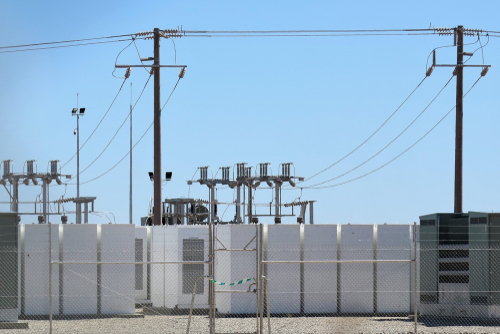Energy storage industry rallies for passage of 30 percent tax incentive

The Energy Storage Association (ESA) launched a national rallying cry this week to drum up support for passage of the storage Investment Tax Credit (ITC), which would make energy storage eligible for a 30 percent stand-alone investment tax incentive.
The ESA believes such an incentive would lead to job growth in the tech sector and affiliated industries, expand the economy and improve the overall energy reliability and resilience of the U.S. system. It would also help to modernize infrastructure and level the playing field for energy storage technologies on the market, the association adds, merely by extending what the ESA has called one of the most successful clean energy policies in history.
The national trade group is emboldened by work at the state and city levels, which have seen a growing press for renewable energy targets. However, going forward, the ESA wants to see energy storage become a part of those targets as well – something the incentive would encourage.
The industry has been pushing this issue for months, even before the official advocacy effort. Back in April, the ESA was joined by other organizations like the American Council on Renewable Energy, ClearPath Action and the Solar Energy Industries Association, in writing Senate leadership about the Energy Storage Tax Incentive and Deployment Act, S. 1142.
“S. 1142 would resolve the uncertainty facing companies who seek to utilize the ITC for energy storage, spurring greater investment and creating jobs while extending the benefits of energy storage deployment among a wider diversity of technologies and industries,” the industry associations wrote. “Those deployments in turn will accelerate the transition to clean energy and position the U.S. as a global leader in energy storage technology.”
Such views were bolstered last month by a report released by the Senate Finance Energy Task Force, led by U.S. Sens. John Thune (R-SD) and Debbie Stabenow (D-MI), which was charged with examining energy tax policies set to expire by Dec. 31, 2019. A credit for energy storage technologies was among these, during which time the task force discussed the narrow set of conditions under which energy storage currently qualifies for ITCs.
“Stakeholders generally stated an interest in securing certainty and predictability for their particular constituencies, irrespective of technology,” the senators wrote. “Moreover, tax credits were acknowledged to be an effective incentive for bringing nascent technologies to a point of competitive maturity and deployment.”
Presently, energy storage only qualifies for the ITC when integrated with ITC-eligible solar resources governed by a narrow set of conditions. Even then, they face recapture risks, which proponents argue causes uncertainty among potential investors.
All of this has led to the concerted effort for something more, but the final push came from a U.S. Energy Storage Monitor Report released by Wood Mackenzie Power & Renewables and the ESA earlier this week. That report found the U.S. energy storage sector deployed more residential storage in the second quarter of 2019 than any other quarter on record. In all, 35 megawatts (MW) of storage was deployed over the period – the first time residential storage has ever topped 30 MW.
“The nascent energy storage market in the U.S. continues to grow in fits and starts, but signposts such as the record residential storage quarter, massive FTM (front-of-the meter) pipeline growth, and innovative policies such as the Massachusetts clean peak standard point towards an industry that is maturing and should stabilize at scale over the next two years,” Dan Finn-Foley, head of energy storage for Wood Mackenzie Power & Renewables, said.
Indeed, the FTM pipeline grew by 66 percent over the second quarter, despite milder growth among the FTM storage market, which deployed 18 MW. Large-scale utility procurements continue and the report did note growing developer interest in independent system operator markets. The report’s authors still believe the storage market will grow around 10 times its current size between 2019 and 2024, thanks to supportive new policies and opportunities in the wholesale market.
On the contrary, the storage industry experienced a 49 percent quarter-over-quarter decline in deployment, the report said. FTM storage saw major project delays and behind-the-meter (BTM) storage was weaker than expected, causing the U.S. energy storage outlook for 2019 to decline to 478 MW. That said, this still represents a 54 percent increase over 2018 deployments.
This, industry representatives say, shows how necessary the ITC is.
“The long-term growth trends of energy storage deployment nationwide are encouraging and consequential for stakeholders, and for all electricity users who want and deserve a more resilient, efficient, sustainable and affordable electricity grid,” Kelly Speakes-Backman, CEO of ESA, said following the report’s release. “Federal lawmakers should take note that they can help to build upon this growth, and indeed result in a 16 percent upside for the U.S. storage market, by providing a long term policy direction for every region of the country by making energy storage an explicit, standalone criteria in the federal Investment Tax Credit (ITC).”
